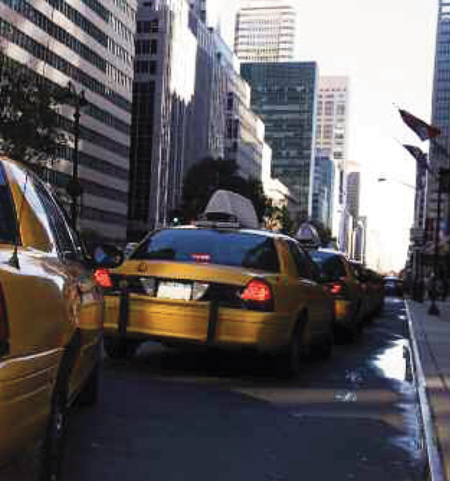|
||||||||||||||||||||||
 |
The TLC’s salaried Commissioner/Chairman, Matthew W. Daus, was appointed in 2001 to fulfill the remainder of a term concluding January 31, 2003. In 2003, Commissioner Daus was re-appointed by Mayor Michael R. Bloomberg to serve a full term expiring January 31, 2010, and unanimously approved by the City Council’s Committee on Rules, Privileges and Elections. The TLC Commissioner/Chairman presides over public meetings of the Commission, and serves as the Chief Executive Officer of the agency. Prior to his appointment as Chairman, he served as General Counsel since 1998, and as Special Counsel from 1996 to 1998.
|
 |
Re-appointed by the Mayor on the recommendation of the Staten Island delegation to the New York City Council, Commissioner Elias Arout has served on the TLC since 1988. Commissioner Arout is a past commander of the American Legion of Richmond County and a former commander of the Legion's Five Star Post. A retired City Housing Authority cop, he was a founder and past president of the board of directors of Project Hospitality. Commissioner Arout’s term expires on January 31, 2008.
|
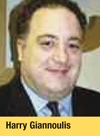 |
Appointed by the Mayor on the recommendation of the Queens delegation to the New York City Council in 1998. Commissioner Harry Giannoulis is a founding member of the Parkside Group, a governmental relations and public affairs consulting firm. Commissioner Giannoulis’ term expired January 31, 2001, though he may serve until replaced.
|
 |
Appointed in September 2005 by Mayor Michael R. Bloomberg to a seven year term on the TLC, Commissioner Edward Gonzales is a mortgage specialist with Citigroup. Commissioner Gonzales’ term expires January 31, 2012.
|
 |
Commissioner Jeffrey A. Kay was appointed by Mayor Michael R. Bloomberg to serve on the TLC Board in 2007. He was appointed director of the Mayor's Office of Operations in March 2006, where he oversees publication of the Mayor’s Management Report and helps manage the daily operations of city agencies and coordinates initiatives and special projects to improve the delivery of city services. Commissioner Kay’s term expires on January 31, 2012.
|
 |
Lauvienska Polanco was appointed to the Manhattan seat of the TLC Board of Commissioners in 2007. Commissioner Polanco worked briefly as a mediator for insurance defense claims, before spending some years at a personal injury law firm. After that, she joined the New York State Unified Court System, first as a Court Attorney in the Lower Civil Court, and now in an elevated role as Principal Law Clerk at the Bronx Supreme Court. Commissioner Polanco’s term expires on January 31, 2008.
|
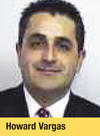 |
Appointed by the Mayor in September of 2005, Commissioner Howard Vargas served as a court attorney for two judges of the Civil Court of New York City before moving on to private practice. His term expires January 31, 2008.
|
 |
Appointed by Mayor Michael R. Bloomberg in 2003, Commissioner Iris Weinshall is currently Vice Chancellor for facilities planning, construction and management at CUNY. Prior to this, Commissioner Weinshall served as the Commissioner of the New York City Department of Transportation (DOT). Commissioner Weinshall also served a distinguished tenure as First Deputy Commissioner of the Department of Citywide Administrative Services.
|
| Changes to the board | |
 |
Appointed by the Mayor as the Commission’s Brooklyn representative, Commissioner Noach Dear began serving a seven-year term on the Board of Commissioners in late 2001. Commissioner Dear was a member of the New York City Council for nearly 20 years, which included a significant tenure as Chair of the Transportation Committee. Commissioner Dear will step down from the TLC Board at the end of 2007 to begin his tenure as a Judge of the Civil Court of the City of New York.
|
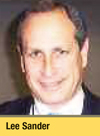 |
The TLC bade farewell to one of its own in January 2007, as Elliot “Lee” Sander stepped down as a commissioner on the TLC’s Board after nine years of distinguished service to “step up” as the newly-named Chief Executive Officer of Metropolitan Transportation Authority. |
“The TLC licenses and regulates over 55,000 taxicabs and for-hire vehicles and more than 100,000 professionals to drive them.”
Commission Meetings
The TLC holds regularly scheduled publicmeetings, typically on the second Thursday of eachmonth, where regulatory actions are discussed and publicly heard, base license applications are reviewed, and staff deliver presentations on new and proposed policies, pilot programs and regulations. In 2007, the TLC promulgated nine rulemaking actions. Most notably, these rules will enhance accountability in the paratransit industry, will improve taxicab/for-hire vehicle partitions, and in-vehicle security cameras, and have created a regulatory framework for the Taxi
Passenger enhancement Project (T-PeP). This report contains a calendar of the specific actions taken at Commission meetings during this past year.
The NewYork City TLC is responsible for licensing and regulating the 13,148 medallion taxicabs currently authorized to accept hails frompassengers within the five boroughs of the City of NewYork, as well asmore than 40,000 other vehicles serving the public via pre-arrangement and radio dispatch. These“forhire vehicles” (FHVs) include community car service (or livery) vehicles, black cars, and luxury limousines with a seating capacity of up to 20 passengers. TLC also licenses and regulates paratransit vehicles (ambulettes) and commuter vans, which have a seating capacity of between nine and 20 passengers and are authorized to transport passengers within specific geographic zones via pre-arrangement.
In addition to the aforementioned vehicles and drivers, the TLC licenses and regulates the businesses that manufacture, install and repair the meters used in NewYork City taxicabs, brokers that assist buyers and sellers of taxicab medallions, and agents that operate taxicab medallions on behalf of owners.
TLC licensed vehicles are an essential part of the comprehensive transportation network of New York City. It is estimated that these 54,000+ vehicles transport over 1.5 million passengers each day.

The Taxi and Limousine Commission meets monthly
AGENCY OVERVIEW AND PERFORMANCE
Consumer Relations
TLC’s Website highlights
This year has been the year of Technology Enhancements not just inside the taxicab but in our virtual taxi as well. With over a half million more viewers than last year, the TLC is pleased to be among the innovative leaders of the cyber world. With our increased use of Listserv and expansion of useful data, TLC continues to utilize the web to better serve our customers. In 2007, we were host to 3,433,548 visitors, up from 2006’s 2,858,664.
Also, an up-to-date list of the authorized drivers of record (leased drivers) for medallions is now being posted to the web site on a daily basis. This allows members of the public to look up drivers to ensure they are licensed.
The pulse of our agency is the TLC website: www.nyc.gov/taxi, which continues to be a conduit for receiving and obtaining information in the quickest most user-friendly way possible.

Call Center
In June 2007, TLC’s Call Center doubled in size and TLC’s talented call center staff have answered an average of 8,900 calls per month versus an average of 4,100 calls during the same time period last year. In October 2007 alone, TLC Call Center staff answered more than 10,000 calls.
The overall average wait time for consumers and drivers to speak to an agent has decreased from approximately six minutes to approximately one minute.
In October 2007, TLC and 311 began taking FHV complaints over the phone. Previously, complaints were submitted only in writing. Calling in complaints makes it easier and less time consuming for passengers to communicate with TLC, thereby improving customer service for FHV passengers. In the first month alone, the number of FHV complaints received has tripled.
Agency budget and headcount
The TLC’s Fiscal Year 2007 operated on a budget of $26,682,442 ($20,649,738 for personnel services and $6,032,704 for other than personnel services). The agency’s Fiscal Year 2008 projected budget is $32,157,622 ($22,789,282 for personnel services and $9,368,340 for other than personnel services). The TLC has an authorized headcount of 428 for the year.
Licensing Division
The TLC’s Licensing and Standards division had a busy and productive year in 2007, crafting and implementing a number of policies and initiatives that improved customer service and streamlined operations.
Base Application Processing
The base unit had another successful year, with almost 100% of all bases renewing before their expiration date. In 2007, we instituted a new procedure of emailing a representative from each City Council member’s office the list of all livery applications submitted to the TLC each month. All livery applications were brought before the Commission in the same timely fashion as instituted in 2006. The base unit has developed a close working relationship with Enforcement, and together they monitor TLC licensed bases by inspecting new and licensed bases.

Customer Service Representative Vicki Hongdilokkul assists licensee Li Bing Tong
with his license transaction

Customer Service Representative Clyde Hunter assists Rasel with his license renewal application.
Customer Service Improvements: Meter Manufacturers
A Licensee Support/Customer Service Unit was created and deployed to improve customer relations and provide better availability of information to our applicants and licensees. Customer service representatives are now the first people to greet and interface with new and existing applicants as they enter the facility. They are available to assist applicants with their questions and a thorough review of the applicant’s documents. They are equipped with two mobile carts that allow them an increased level of access to information relating to the client, while they are dealing directly with the individual. All greeters are bilingual, which enhances our ability to better serve our clientele.
Compliance Monitoring
A new Compliance Unit was created to enhance and increase our capacity to monitor compliance with our rules and regulations. The unit has coordinated with the Uniformed Services Bureau (USB) on developing a structured monitoring\summons process for several TLC rules. For example, this unit may monitor if vehicles have not properly been inspected and respond accordingly. This should have a direct and positive effect on the safety of the riding public when they enter vehicles licensed by the Commission.
New Category of Licensee
The Division, in conjunction with the Legal Office and the Office of the Chief of Staff, developed a new licensing application process as part of the T-PEP process. Meter manufacturers are now required to be licensed by the Commission.
Enforcement Division
Safety and Emissions
As of January 1, 2007, medallion taxicabs were no longer required to seek a New York State inspection at an outside facility in addition to its three annual TLC inspections, due to the Safety and Emissions (S & E) Division’s certification as a NYS Department of Motor Vehicles (DMV) Inspection facility. S & E was likewise instrumental in the approval and hack-up, once again, of over 300 hybrid-electric vehicles for use as taxicabs, bringing the total number of hybrids in the taxi fleet to 637–more than any other city in the nation.
Field Enforcement
The USB’s field enforcement continued during 2007. “Operation Refusal,” which gauges compliance with the laws, rules and regulations prohibiting service refusal, tested 1,822 taxicab drivers yielding a 93.80% compliance rate. “Operation Street Hail,” which tests for-hire vehicle drivers for compliance with the regulations requiring the pre-arrangement of their services, saw the issuance of 1,106 summonses for illegal activity in 2007. USB was also responsible for the padlocking of a record 58 illegal for-hire bases in 2007 to protect the public and worked closely with the TLC’s Licensing Division to facilitate the licensing of legitimate bases.
In November 2007, the TLC’s USB welcomed a new class of officers.

A TLC Officer in the field.
Adjudication Division
Adjudications Administration Proceedings
Over the past year, as of November 29, 2007, the TLC adjudicated 75,005 summonses including a total of 95,129 violations. The TLC’s Adjudication Division has continued its work to streamline the process to facilitate hearings for the incoming volume of cases by adding an electronic tracking program.
Other notable improvements include all motions, guilty pleas by mail, data entry of summonses, and processing of unpaid fine notices being completed within two business days. Additionally, data entry of dispositions (judges decisions into TAMIS) are completed daily 100% of the time, and daily calendar performance (completion of the daily summonses scheduled by 5:00 p.m.) has been maintained at 99.98% for the year.
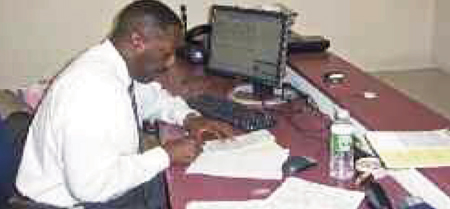
Administrative Law Judge Herbert G. Woods renders a disposition.
Appeals
The appeals unit has switched from a paper management system to a computerized tracking system with automated production of all correspondence.
This streamlined operational improvement has made it possible to now produce statistical analysis of appeals decisions and provide tracking logs for caseload management.
As of mid-August 2007, the TLC’s appeals decisions are being made available on the New York Law School’s City Law website. Decisions are also being archived to an electronic file for easy access by judges for review and research.

Administrative Law judge Mark Snyder considers a case as presented by
TLC Officer Igor Gorbikov and attorney Daniel Bach.
Administrative Law Judges
The Adjudications Tribunal issued a revised ALJ Manual in May 2007, designed to assist judges in understanding their role as independent fact finders and decision makers. The ALJ Manual, together with the newly-adopted City Code of Ethics for ALJs (an initiative of the Office of the Administrative Justice Coordinator), has helped to further enhance the professionalism of the TLC’s judges.
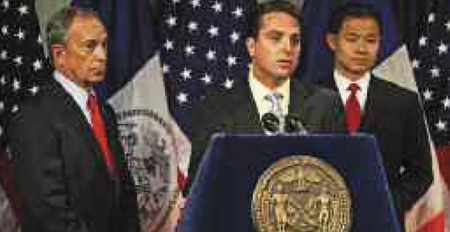
As Mayor Michael R. Bloomberg (at left) and City Council Member John Liu look on,
Commissioner Matthew Daus (at podium) thanks the City Council for working closely
with the Administration on legislation to help the public more readily identify
properly licensed commuter vans.
Rule Changes
Commuter Van Summary
In response to City Council Intro 430-A (2007), in early 2008 TLC will begin issuing easy-to recognize decals to legal, registered Commuter Vans throughout the 5 boroughs. Customers, drivers, owners, and law enforcement personnel will soon have an easier time identifying vans that are properly registered in compliance with TLC regulations. The decals will have tamper proof technology to ensure that only registered vans have them and will also make it easier for passengers or members of the public to identify vans and their owners if they call 311 to file a complaint or pay a compliment.
